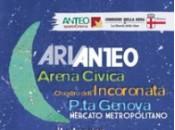In 2011, astrophysicists led by James Greenwood of Wesleyan University in Connecticut analysed variations of hydrogen isotopes in samples of apatite (a water-loving mineral) collected during the Apollo expeditions. In their publication Hydrogen Isotope Ratios in Lunar Rocks Indicates Delivery of Cometary Water to the Moon, in Nature, they shows how these measurements appear similar to those found in well-known comets such as Hale-Bopp, Hyakutake and Halley. Lunar surface is often bombarded by comets, meteorites and micrometeorites whose nucleus contains great quantities of ice. When one of these objects hits the moon, the impact would make the ice be scattered on the lunar surface. This hypothesis has been considered the likeliest answer to the question of lunar water origins until 2012.
The latest discoveryIn October 2012, Yang Liu and his group of researchers from three U.S. universities found evidences that lunar water comes from sun and published them in Nature Geoscience. Using new techniques of spectroscopy and spectrometry they revealed that hydroxyl in lunar regolith is mostly from solar wind protons. In May 2014, Alice Stephant and Francois Robert of Centre National de la Recherche Scientifique in Paris analysed 45 microscopic grains of dust brought from the moon by Nasa's Apollo 16 and 17 missions and confirmed this hypotesis. They found out that the main source of lunar water is likely the solar wind, streams of high-energy particles blasted from the sun. According to their theory, atoms of hydrogen in solar wind would react with oxygen trapped in moon rocks and create water.
To detect the hydrogen isotopes Stephant and Robert ran samples of lunar soil through a mass spectrometer. Understanding the deuterium-hydrogen ratio in the water is crucial: indeed, sun is very poor of deuterium (hydrogen whose nucleus has one proton and one neutron) while it is frequent in comets and all other bodies of solar system. Their findings published in Proceedings of the National Academy of Sciences shows that deuterium is just a little quantity of the isotopes analysed. They concluded that only 15% of the lunar water comes from comets or meteorites and that the rest of it is formed by the solar wind interaction.
in Uncategorized.






![[Anteprime Piemme] Younger ragazza Orchard street](https://m22.paperblog.com/i/289/2895893/anteprime-piemme-younger-la-ragazza-di-orchar-L-6ND8P5-175x130.jpeg)

